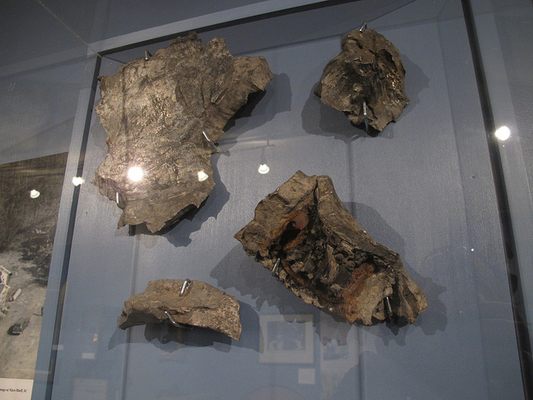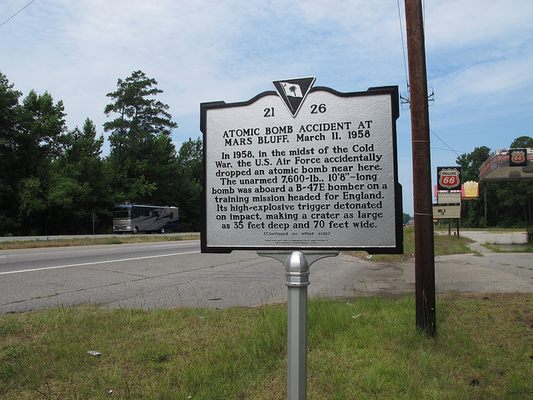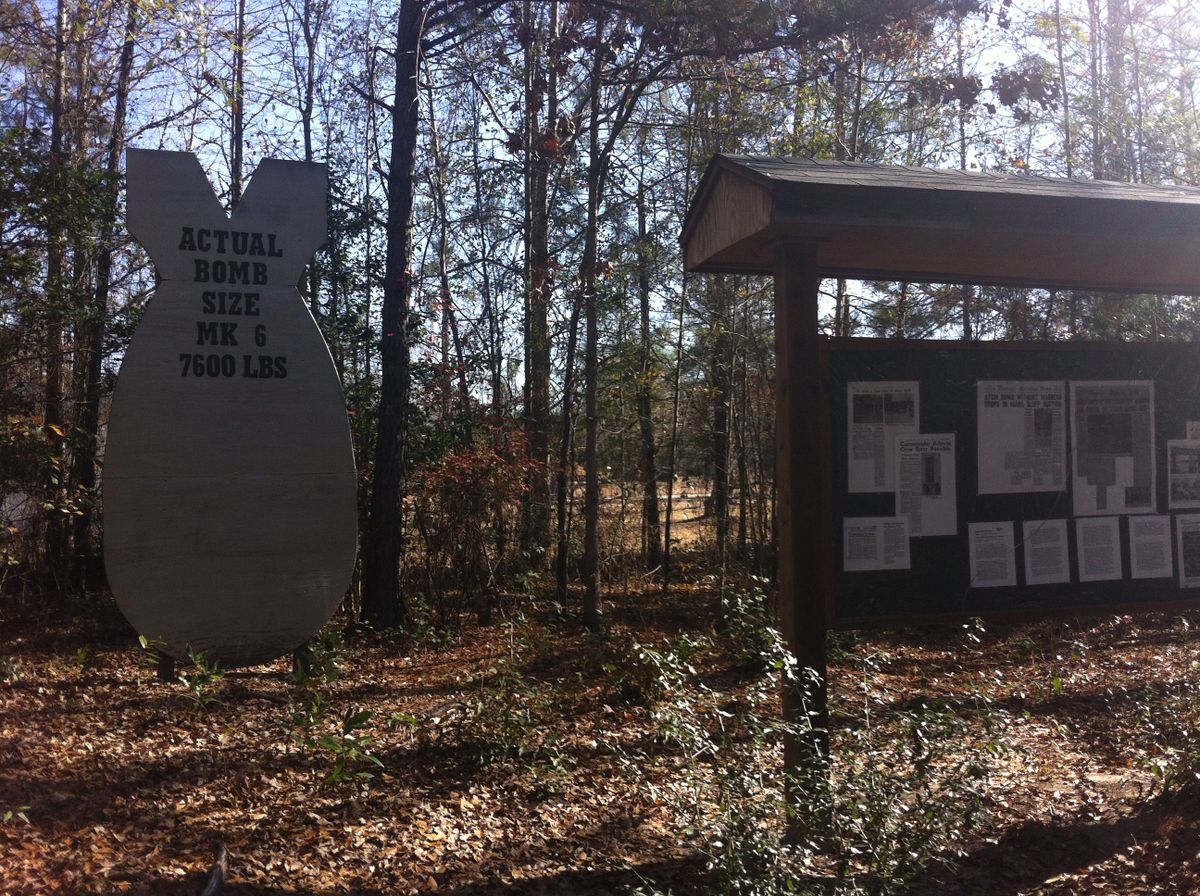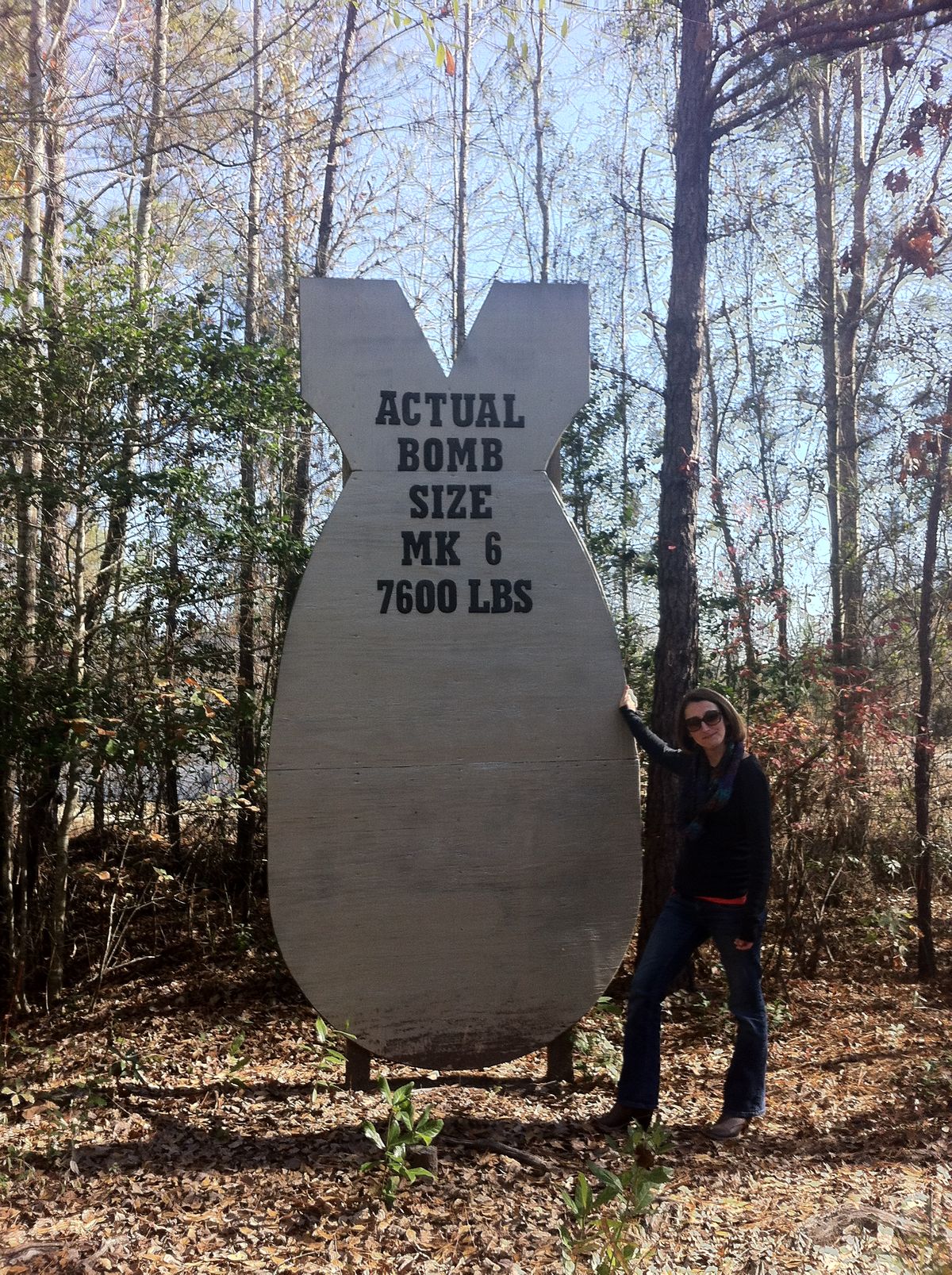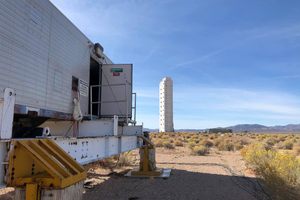About
It is not often spoken about, but it's an unsettling fact that the military had some trouble keeping those precious nuclear bombs in the air during transport at wartime, as well as throughout the Cold War when the Soviet threat had everyone on their toes.
Some were lost and never recovered; sometimes the aircraft carrying them would crash. On two occasions, the bombs were accidentally dropped on unsuspecting American soil. Walter Gregg knew about the willy-nilly bomb handling all too well, because he had one dropped on his house.
Clearly, if a nuclear bomb had been dropped in a populated area of South Carolina and actually detonated, it would have been catastrophic, and impossible for the military to keep relatively quiet. Luckily for Gregg, his family, and the rest of Florence County, the bomb wasn't armed with its devastating nuclear rod. Despite the absence of that major component, it was not exactly a holiday to have a Mark 6 bomb dropped on your head from 15,000 feet.
In 1958, the Cold War was in paranoiac full swing, and the B-47 Stratojet flying over South Carolina that fine spring day was required to carry the nuclear weapon, because all hell could break loose at any moment. On their way to the United Kingdom to take part in "Operation Snow Flurry," the crew was just getting comfortable for their transatlantic trip when a fault light began to glimmer, indicating that the bomb's harness locking pin had not engaged.
Navigator Captain Bruce Kulka went to investigate, and in a colossal act of carelessness combined with a disturbing lack of safety features, accidentally hit the emergency release pin as he reached around the bomb to pull himself up. The 8,500-lb. device hit the bomb bay doors, forcing them open, and, as Kulka watched in horror, screamed into the wooded rural area of Mars Bluff.
Walter Gregg was enjoying the day with his family that March 11th. Mucking about in his shop with his son while his daughters and a friend played in the yard, Gregg paid no mind to the bomber flying overhead, a common sight in those days. His wife was working in the house, and Gregg's cousin puttered about elsewhere on the property — all in all, it was a peaceful day like any other. What happened next caught his full attention, and shattered the productive buzz of contentment: a tremendous blast that seemed to come from directly above shook the ground, filling the air with smoke and dust.
Gregg, stunned and with ears ringing, frantically searched through the chaos for his family, following the sounds of their screams in the smoke. Assuming the plane had crashed, his mind tried to wrap itself around the crater that now existed where his garden was just moments before, the hole stretching 75 feet across and 30 feet deep. The pieces of ground that had been where the empty void was now began crashing back to earth around him, some of them weighing hundreds of pounds.
Miraculously, as the dust settled and each family member was accounted for, the Gregg family was found battered and bruised, but intact. Everyone had survived with only minor injuries. Mrs. Gregg suffered the worst of it with a gash to her head. The house and several outbuildings were destroyed, the garden pulverized, and several nearby homes were damaged by the debris, but everyone walked away, survivors of 7,600 pounds of explosives dropped directly on their heads by the U.S. Air Force.
From then on, all flights were required to ensure that bombs were locked down properly before takeoff, a rule that you'd think would have been instituted before accidentally dropping a bomb on someone's house. The military eventually paid Gregg off, giving him $54,000 with which to start over. Gregg became friends with the crew of the aircraft that accidentally blew up his property, and remained pen pals with them for many years, long after moving away from Mars Bluff.
The crater is in a heavily wooded area, and is becoming harder and harder to see but can still be spotted, at least for now.
Related Tags
Know Before You Go
On E. Palmetto St./US 301, roughly 6.5 miles east of Florence. The marker is on the north side of the highway, 1.2 miles east of Freedom Blvd or .3 miles west of Francis Marion Rd/Hwy 327. To reach the crater, drive up the road (Crater Rd) next to the marker, then turn sharply right as it bends around an abandoned trailer park. When you get to a gate leading out of the trailer park, you'll see a small, overgrown path on the left leading into the woods, to the crater. Visitors are assumed to have gained permission from the owner to visit.
Jan 2019: Readers have reported that the crater can be very difficult to find, and that the area has a number of treacherous hazards such as open manholes and detritus to look out for.
Community Contributors
Edited By
coryroberson, wayneyp, Allison, treytatum...
Published
March 19, 2013


